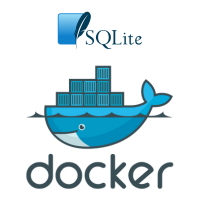Using Laravel with an SQLite database
The fast-paced world of web development requires selecting tools that balance efficiency and scalability. The choice of a suitable database management system plays a pivotal role. SQLite, a lightweight yet powerful database engine, often remains overlooked. When integrated with Laravel, a popular PHP web application framework, SQLite offers developers a reliable solution for building efficient applications.
Prerequisites
If you're in need of setting up a new Laravel environment, please consult our guide on initiating a new Laravel project: Create Laravel 10 project from scratch.
Installing SQLite database
If you are looking to install SQLite on your machine, follow these steps:
For Windows
Visit the SQLite download page at https://www.sqlite.org/download.html.
Under the Precompiled Binaries for Windows section, download the appropriate ZIP file, either 32-bit or 64-bit.
Extract the ZIP file to a directory of your choice.
Add the SQLite binaries directory to your system's PATH.
For macOS
SQLite comes pre-installed on macOS. You can access it via the Terminal.
Open Terminal and type sqlite3. If not installed, you will be prompted to install the Command Line Developer Tools. Confirm the installation, and SQLite will be available.
For Linux (Ubuntu/Debian)
Open the terminal.
Run the following commands:
sudo apt-get update
sudo apt-get install sqlite3
Once you have SQLite installed locally, you can use it for development or testing purposes.
Configuring SQLite database
SQLite's strength lies in its simplicity, making it an excellent choice for projects of varying sizes. Unlike traditional databases that require a separate server process, SQLite operates as a self-contained, serverless database engine. In SQLite, a database is a single ordinary file on your disk. This file contains all the tables, indexes, and other structures needed to store and retrieve data efficiently. By specifying the database, you're essentially defining the path and name of this SQLite database file. SQLite's lightweight nature doesn't compromise its functionality. It supports SQL features, allowing developers to execute complex queries and transactions.
Configuring SQLite driver in Laravel
Firstly, ensure SQLite is enabled in your Laravel project. Open the .env file and set the DB_CONNECTION and DB_DATABASE variables as follows:
DB_CONNECTION=sqlite
DB_DATABASE=/path/to/your/database.sqlite
Make sure to replace /path/to/your/database.sqlite with the actual absolute path where you want to store your SQLite database file. If the file doesn't exist at the specified path, Laravel will create it for you. You can also create it manually:
touch /path/to/your/database.sqlite
In Laravel, the Eloquent ORM facilitates the interaction with SQLite databases. Eloquent provides an expressive syntax for querying databases, simplifying tasks such as fetching, inserting, updating, and deleting records. Consider the following example of using Eloquent with SQLite:
// app/Models/User.php
namespace App\\Models;
use Illuminate\\Database\\Eloquent\\Model;
class User extends Model
{
// specify the table associated with the model
protected $table = 'users';
// other model configurations...
}
With the model in place, querying the SQLite database becomes straightforward:
// somewhere in your application
$users = \\App\\Models\\User::where('age', '>', 25)->get();
// perform actions with the $users collection...
The retrieval of data and model operations remain identical once the driver is set up for SQLite. It's important to note that while SQLite is powerful, certain complex MySQL functions might not be accessible when using this lightweight database.
Conclusion
The integration of SQLite with Laravel equips developers with a potent toolkit for developing web applications. The simplicity of SQLite, combined with Laravel's intuitive integration, provides a smooth development experience. It's a win-win, be it a small project or a bigger one. Use the simplicity of configuration and the power of Eloquent to unlock the complete potential of this robust combination in web development.



0 Comments